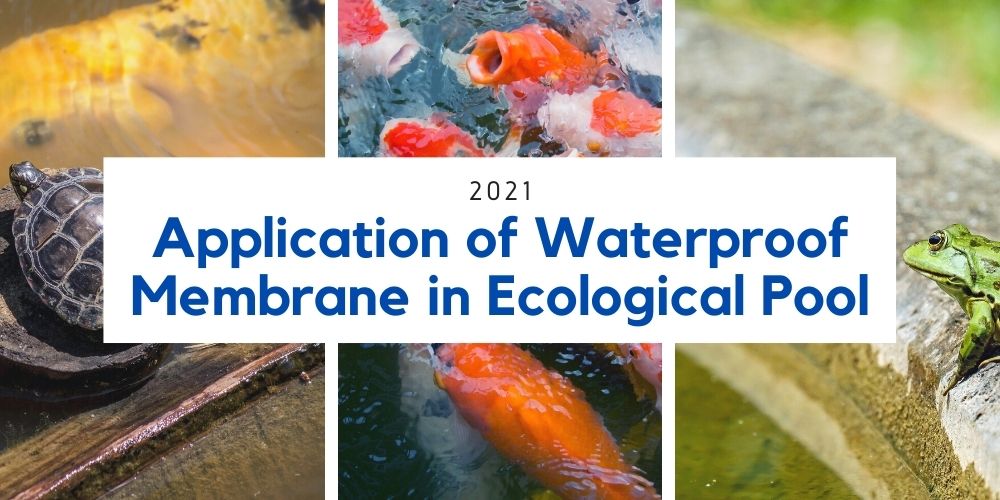BLOG
- Home
- Blog
- Waterproof membrane
- Application of Waterproof Membrane in Ecological Pool
Application of Waterproof Membrane in Ecological Pool
October 29,2021

Waterproof membranes have been used in waterproofing projects for more than 50 years. They were first used in landfills to prevent pollutants such as wastewater and heavy metals from penetrating into the soil layer and causing pollution. The most common raw materials for building materials such as waterproof membranes are PE, PVC, TPO, OBC, JPO, etc., or other materials independently developed by manufacturers.
At this time, there will be another problem. Many people must have a question. If the ecological mechanism is to be maintained if there is no supplementary cycle through the soil and external water sources, won't the water in the pool become stagnant water? However, most of the design of the ecological pool will have a more efficient filtration cycle mechanism to operate, so don't worry too much.
Application in ecological pool
Introduction to Ecological Pool
The ecological pool is a wetland environment created by artificial construction and uses natural ecological mechanisms to achieve the sustainable cycle management of the two mechanisms of purification and biology. The different way is to use the current technology to strengthen its processing capacity for pollutants and sewage treatment by artificial means.Application of Waterproof Membrane in Ecological Pool
Most of the waterproof membranes used in pools are mainly PVC and HDPE, which are two relatively mature materials. Nowadays, in order to achieve more stringent non-toxic inspection conditions, TPO, OBC, and other similar materials have been developed. The waterproof membrane is usually laid on the top of the soil layer in the ecological pool, so that water will not be lost due to the soil.At this time, there will be another problem. Many people must have a question. If the ecological mechanism is to be maintained if there is no supplementary cycle through the soil and external water sources, won't the water in the pool become stagnant water? However, most of the design of the ecological pool will have a more efficient filtration cycle mechanism to operate, so don't worry too much.
Essential characteristics of waterproof membrane
- Tear resistance and puncture resistance: Avoid damage to aquatic animals and plants and other external factors, which may increase repair costs.
- UV resistance: Most ecological pools are located in areas exposed to sunlight, so UV resistance is required to avoid damage and the release of toxic substances.
- Flexible: In order to make the construction easier and conform to the shape of the pool, a flexible waterproof membrane is needed for the application.
- Non-toxic: There are many plants and animals in the ecological pond, so some third-party inspections are usually required to prove that no toxic substances will be released under certain conditions.
Conclusion
The application of waterproof membranes in waterproofing projects is becoming more and more common, such as breeding ponds, waste water tanks, water conservancy facilities channels, truck transportation tanks, highway bridge projects, etc., mainly to prevent external water vapor and liquid pollutants from penetrating the cement or building materials with permeability. Later, we will explain the use of waterproof membranes in different projects for different purposes.► 想看更多產品 More Product【Click me】
► 立即洽詢 Inquire now【Click me】
► 阿里巴巴 Alibaba【Click me】
